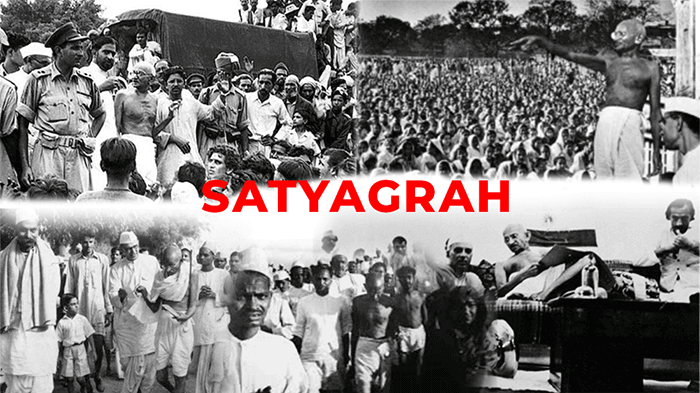Emergence of Gandhi in Africa
by Devender
0 1407
Mohandas Karamchand Gandhi was born in Porbandar in the princely state of Kathiawar in Gujarat on October 2, 1869.
- He studied law in England and returned to India in 1891
- However, he failed as a practicing lawyer both at Rajkot and in Bombay
- In 1893, he went to Natal, South Africa for a case in which his client Dada Abdullah was involved
- He witnessed racial discrimination against Blacks to which Indians who moved to South Africa as laborers were also subjected
- He then decided to stay in Africa to help Indians fight for their rights
- He stayed there till 1914 after which he returned to India in January 1915
- Moderate Phase of Struggle:
- He established Natal Indian Congress
- He also started a paper on Indian opinion to unite different sections of Indians
- The phase of Passive Resistance or Satyagraha:
- Satyagraha against Registration Certificates:
- Gandhi formed the Passive Resistance Association to conduct the campaign
- Gandhi and others who refused to register were put in Jail
- The Indians retaliated by publicly burning their registration certificates
- Campaign against Restrictions on Indian Migration:
- Setting up of Tolstoy Farm:
- Campaign against Poll Tax:
- Invalidation of Indian Marriages:
- Indians considered it as an insult to the pride of their women
- Thus, a lot of women also the movement
- Even the viceroy of that time, Lord Hardinge condemned these actions and called for an impartial inquiry
- A Satyagrahi was not to submit to what he considered as wrong but was to always remain truthful, non-violent, and fearless.
- A true Satyagrahi would never bow before the evil, whatever the consequence.
- He should be ready to accept suffering in his struggle against the evildoer.
- This suffering was to be a part of his love for truth.
- Only the brave and strong could practice Satyagraha, which was not for the weak & cowards, Even violence was preferred to cowardice.
- Even while carrying out his struggle against the evildoer, a true Satyagrahi would love the evil-doer; hatred would be alien to his nature.
Emergence of Gandhi in Africa
It was the phase of 1894 to 1906 where Gandhi relied on sending petitions and memorials to the authorities in South Africa and in Britain in hope that once the authorities were informed of the injustice with Indians, they would take some sincere steps for the help of the Indians as Indians were after all British subjects.
It was the time period of 1906 to 1914 which is the second phase where methods of passive resistance or civil disobedience were used which Gandhi called Satyagraha.
New legislation was passed in SA which made it compulsory for all Indians to carry certificates of registration with their fingerprints all the time with themselves. However, Indians under the leadership of Gandhi didn't want to bow down to this rule.
People after refusing to follow the last law went against the law which forbids Indians to migrate. The Indians defied this law by crossing over from one province to another and by refusing to produce licenses.
It became a bit difficult to sustain the high pitch of the struggle, Gandhi decided to put all his attention into the struggle. The Tosloy farm was set up like a house to the families of the Satyagrahis and to give them a way to sustain themselves.
A new tax of 3 pounds was imposed on Indians who stayed in SA after their contract ended. It was pretty heavy as these people used to earn less than ten shillings a month. So, it was added to the list in the ongoing struggle.
A supreme court order that stated all the marriages which were not conducted according to Christian rites and by the registrar of marriages were illegal added more fuel to the fire. According to this, all Hindus, Muslims and Parsi's marriages were illegal and children born out of these marriages were to be illegitimate.
After a series of negotiations that involved Gandhi, Lord Hardinge, C.F. Andrews, and General Smuts, finally, an agreement was reached by which the Government of South Africa conceded the major Indian demands relating to the poll tax, the registration certificates and marriages solemnized according to Indian rites, and promised to treat the issue of Indian immigration in a sympathetic manner.
Gandhi’s Technique of Satyagraha
Gandhi modified the technique during his time in SA. It was based on truth and non-violence. Some important points of it were:

Lord Hardinge awarded the Kesar-e-Hind medal to Gandhi in 1915 for his services in the Zulu and Boer wars, however, he returned these medals for NCM in connection with the Khilafat movement to Viceroy Chelmsford in 1920.

Share:







Comments
Waiting for your comments